B-LOB
About
Help experiment B-LOB, escape its captors by traversing through a series of levels via his slimy antics in this 2D platformer game.
By holding left click and releasing (much like a slingshot), players can sling B-LOB and stick onto surfaces like walls, ceilings or more!
Genre: 2D Platformer
Project details
B-LOB was made in a team of 7 during my sophomore year at DigiPen (Singapore).
A prototype was made first made in Unity, and then ported into a Custom Engine.

What I brought to the team
Click on the icons below to go straight to the section!
I helped with the ideation of the main gameplay mechanics - which were later brought into the Unity Engine, where I was responsible for prototyping the core player mechanics (using C#). With the mechanics established, my main role was to design and build the levels in our engine.
Contributions:
Ideation of gameplay loops
Game design documentation
Prototyping gameplay mechanics
Designed and built 3 full levels
Ideation & Prototyping
We wanted a unique mechanic that players could easily pick up and play - a twist on the familiar genre. Being a platformer, a large emphasis was placed on player movement. With that in mind, we landed on a simple sling, stick and sling again loop.
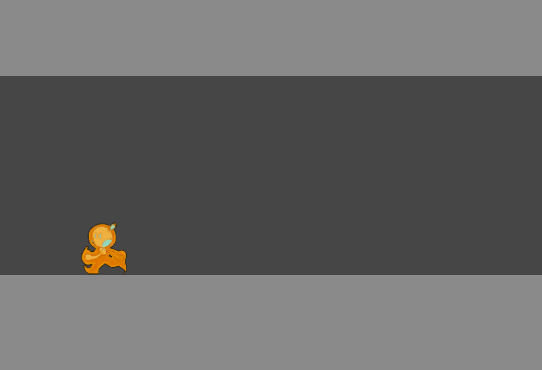
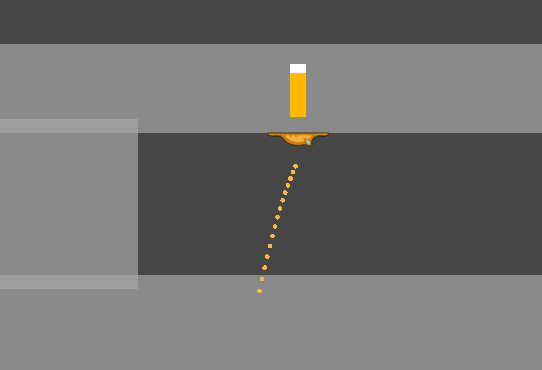
I worked on the game prototype in Unity to get a general feel of the experience we were trying to achieve. It was important for the sling and stick mechanics to be versatile, and complement the obstacles well.
This included:
Programming of player mechanics (Unity, C#)
A gym level
Full game loop
Level Design Process

Here, I will be showing my level design process for game. (using level 2, as an example)
1. Metrics
I started by noting down our Blob character's movement range - this would give me a good idea of how to structure the level and obstacles. Blob's sling is his main source of movement - which can be simplified into his maximum horizontal, and vertical movement.


Blob's dimensions
1x2 tiles
Sling Width
10 tiles
Sling Height
6 tiles
The level needed to have a mix of spaces - to account for Blob's mobility, and wall sticking mechanic.
Too cramped spaces would not make use of Blob's mobility, whereas too-open spaces would not make use of his sticking ability. It was important to maintain this balance in the level design.
2. Obstacle/Interaction ideation
With that in mind, I noted down all the mechanics we had and sketched out possible obstacles or interactions. The sketches were rough, and were tested in Unity as soon as possible.


Sketching


Testing in Unity
3. Level sketch and blockout
With the interactions working as intended, I moved on to the level itself.
I first sketched out the level, this time with more focus on the metrics. After which, the level was blocked out in the engine itself for testing.

Level Sketch

Blockout in engine
The level was designed around a single-stage mechanic - the vine walls which move and can be stuck on. Players can also be crushed by them (or hurt by the thorny ones) This allowed our vine mechanic to be versatile and used in different scenarios.
Being introduced for the first time, it was important to give scenarios that allowed players to learn the mechanic safely, before gradually increasing the intensity.
Being the 2nd level of the game, players were expected to be familiar with the basic movement, sling and stick abilities - making the vines the only new mechanic that players have to learn. Focusing the level around one central mechanic would prevent players from being overwhelmed by too many interactions, and is a nice way to keep the level to a common theme. (visually, and gameplay-wise)

High-intensity moments highlighted in red (click to enlarge)
I also made sure that the intensity curve of the level was well crafted, by ensuring that high-intensity moments were well spread out.
4. Putting it together
Now it was time to put the level together - adding other interactions like collectables and checkpoints* (*Non-interactable Props and background assets were NOT added by me)
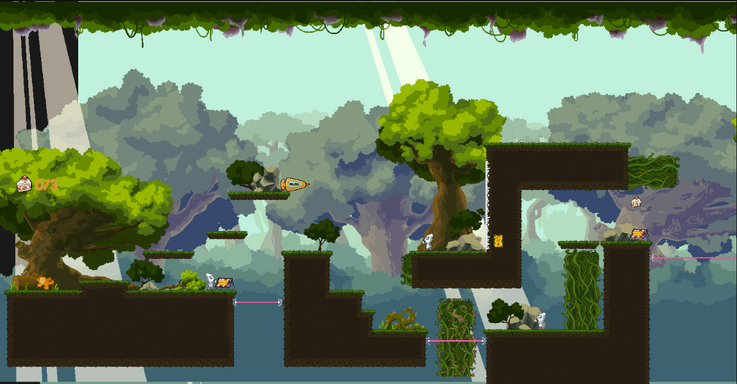
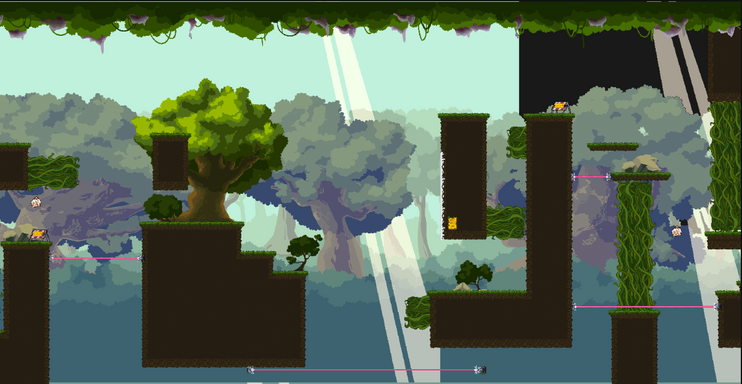
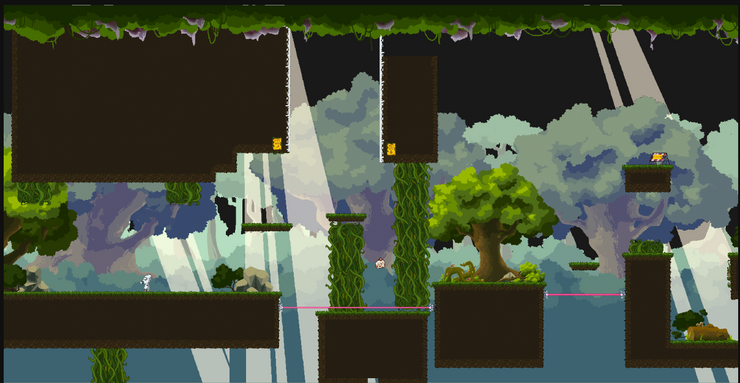
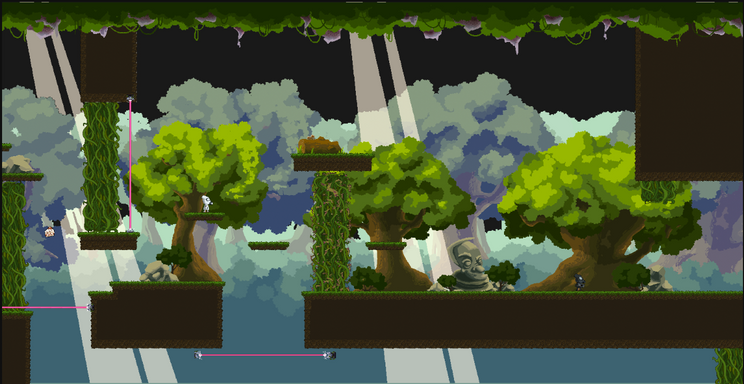
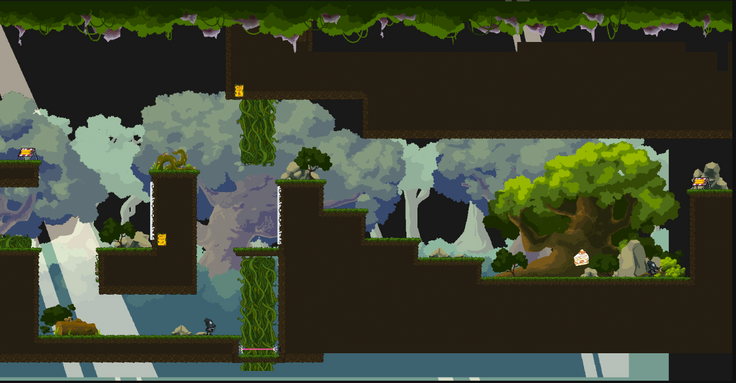
Full Level v1

Main Path depicted in orange, collectable path in yellow (click to enlarge)
Below are the screenshots of the final iterations of the levels in the game. (Green bars depict checkpoints which are invisible in-game) Collectables were also added to give an extra challenge for players - some requiring them to go through trickier routes.
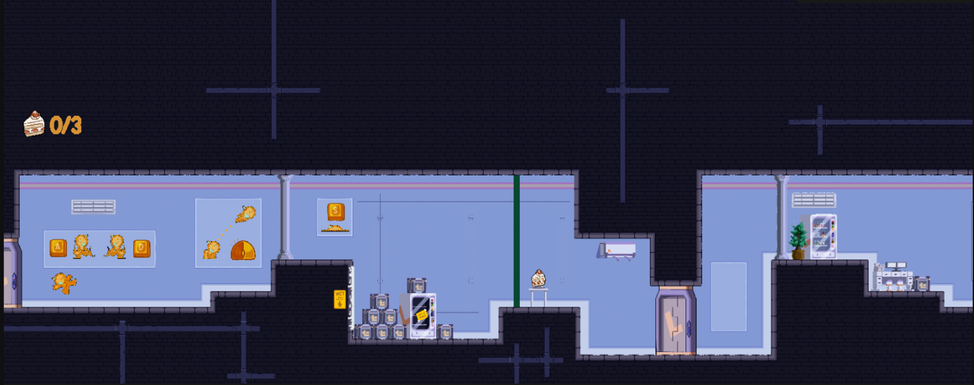
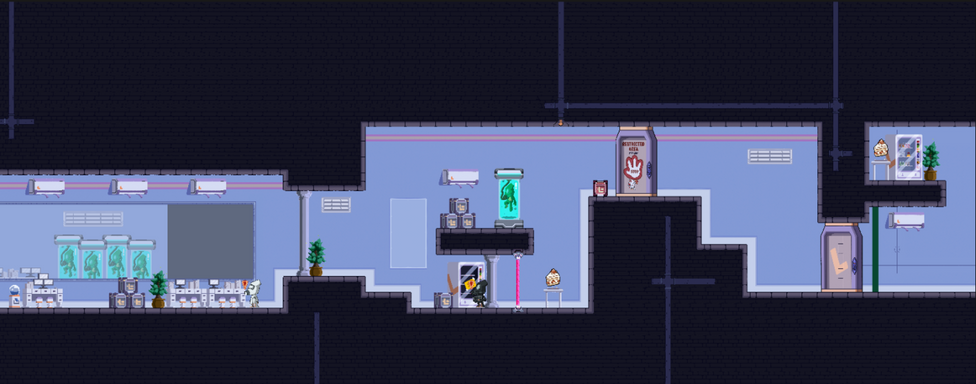

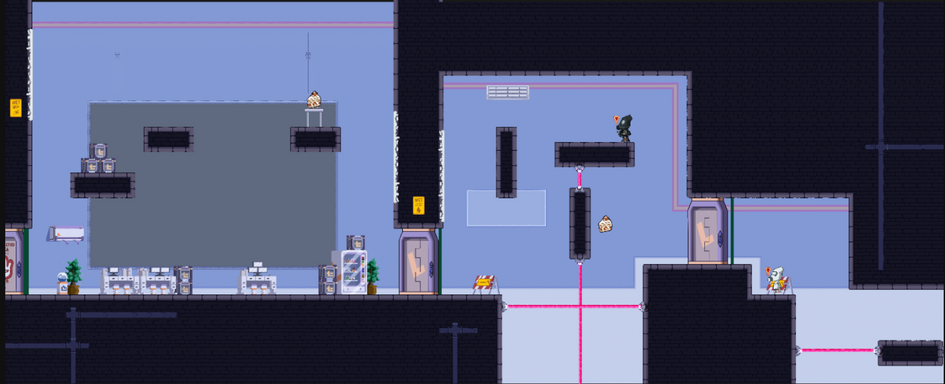
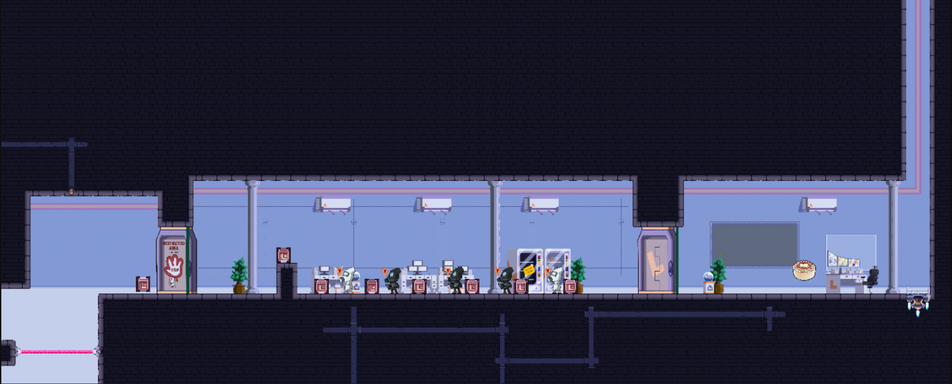
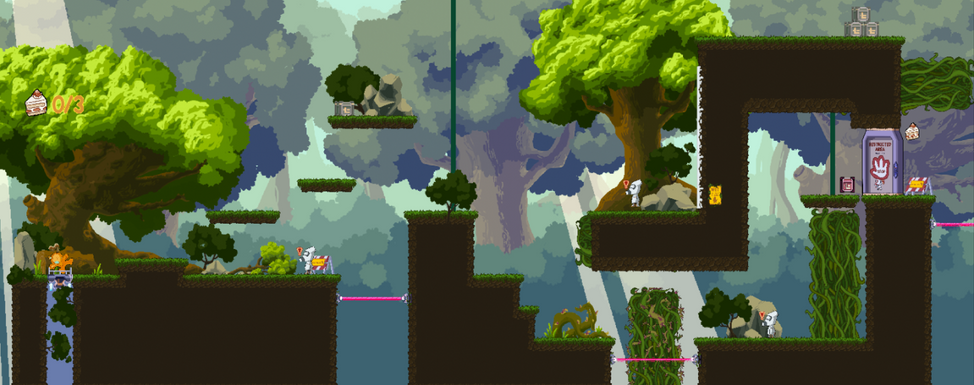
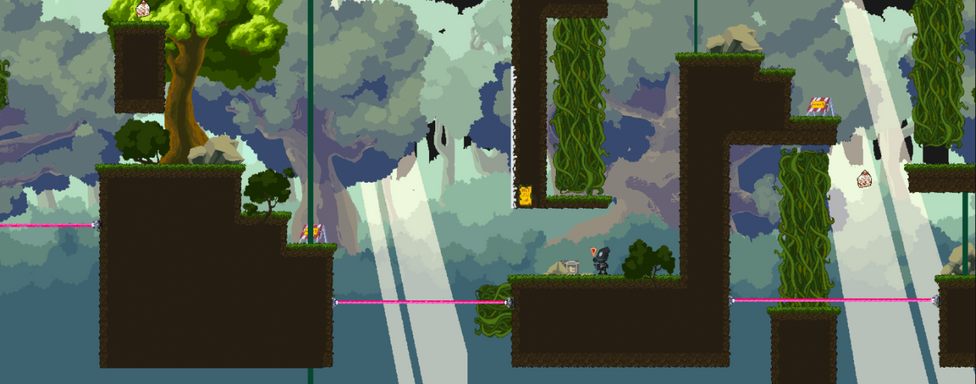
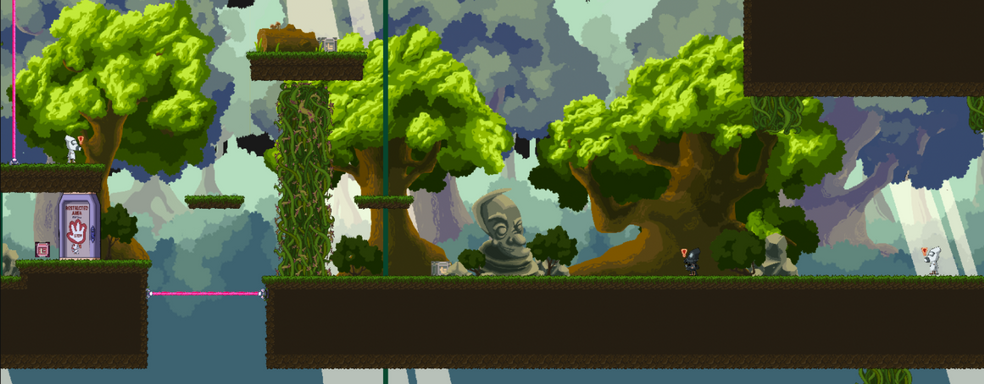
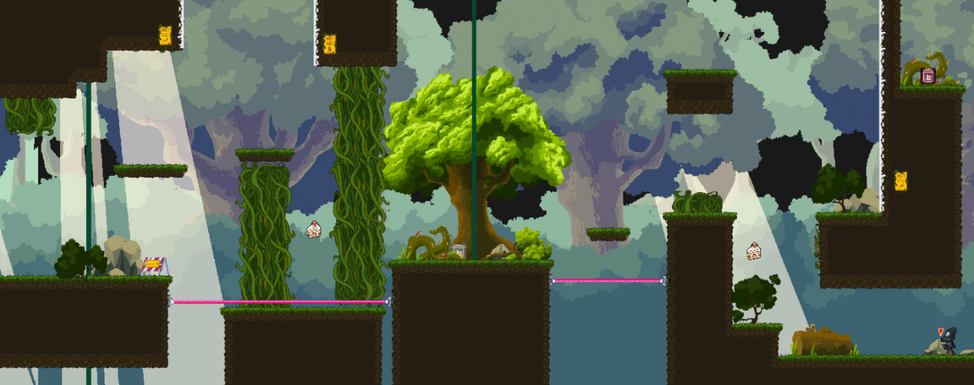

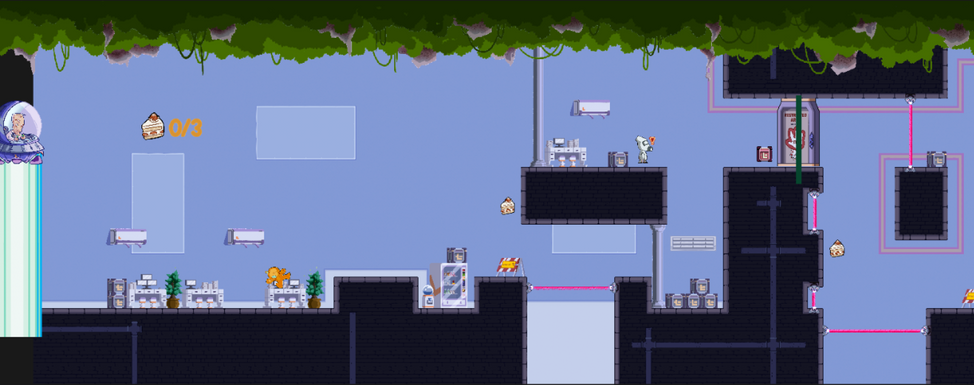
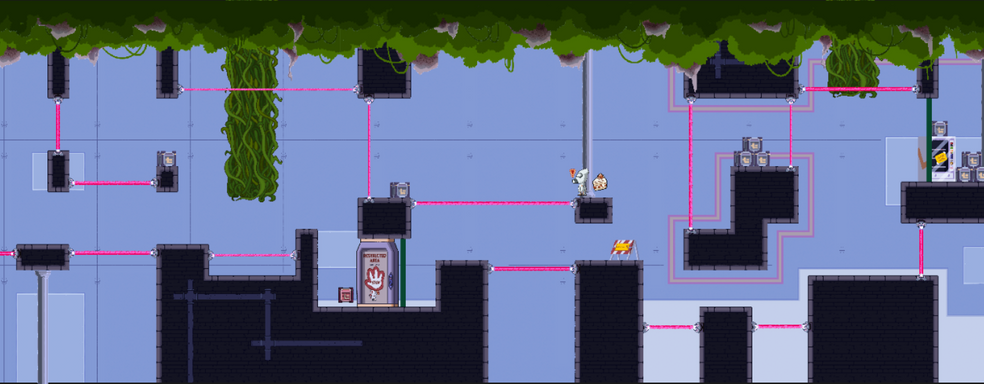
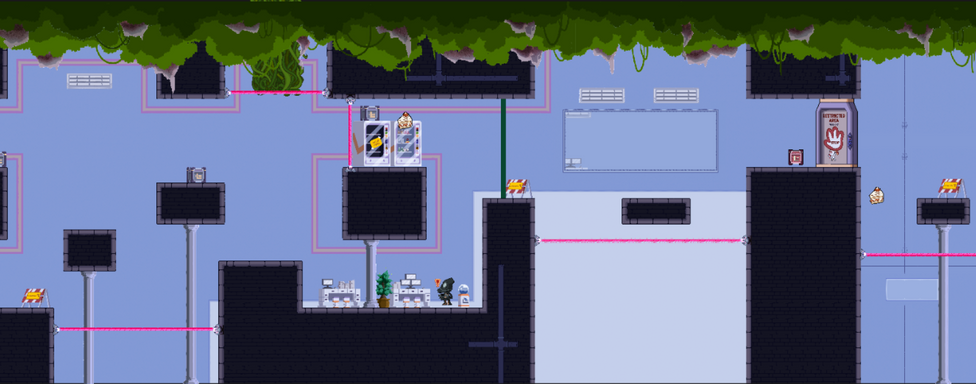
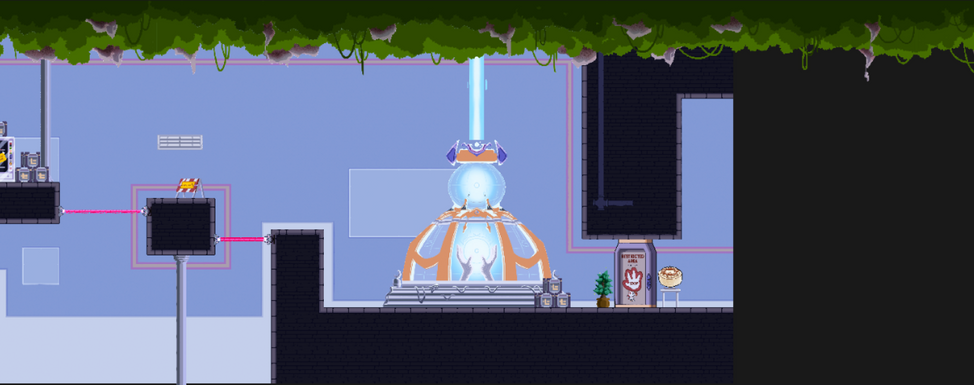
Screenshots of levels
Documentation
I was responsible for the documentation of the game - which included the game summary, controls, gameplay loops and level design.
Documentation was done periodically during the game's development in Google Docs. It was, later on, cleaned up and beautified on Figma as part of our final submission.
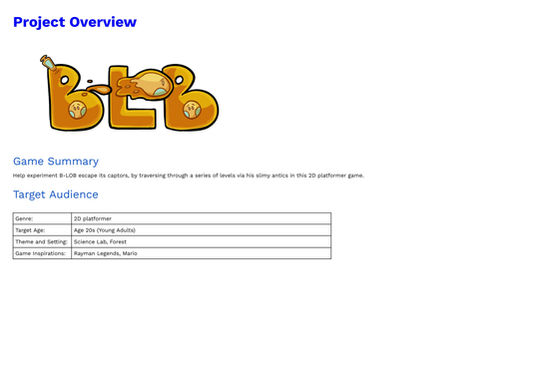
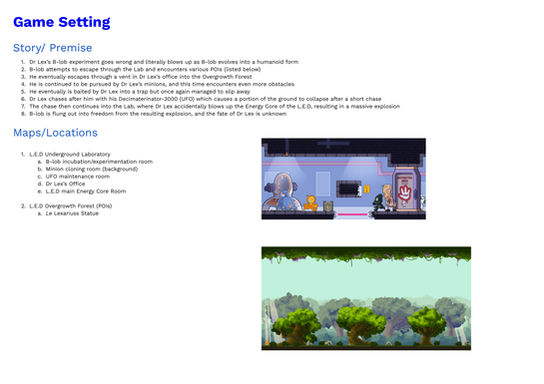
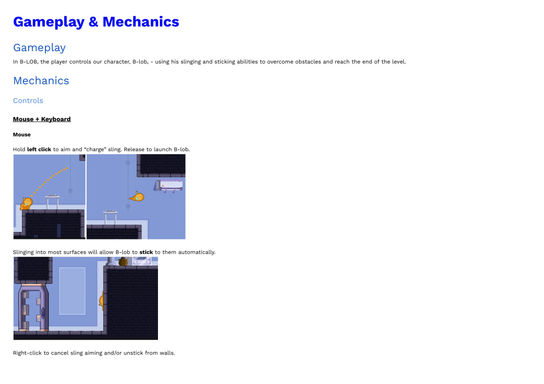
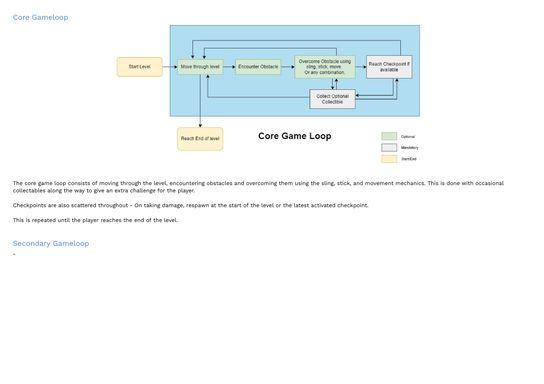
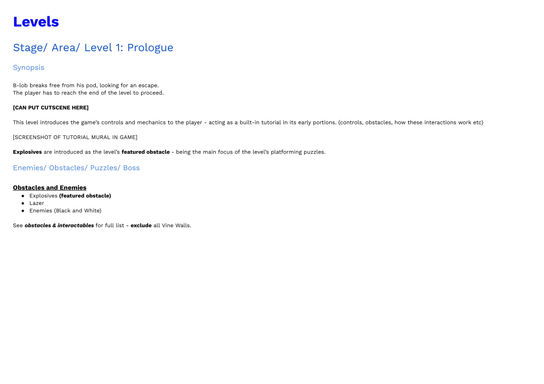
Screenshots of GDD (Docs, during development)
